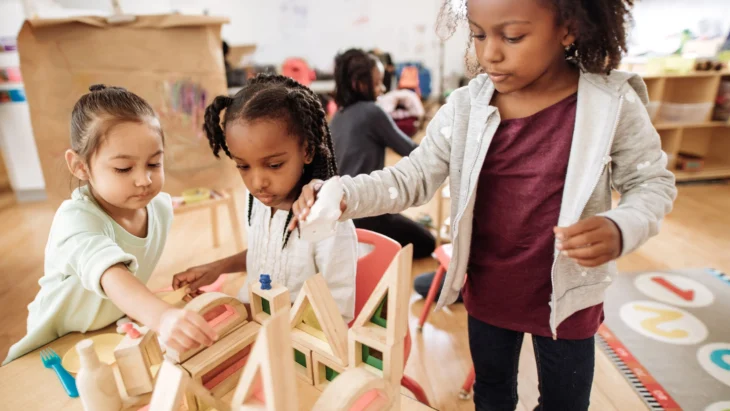Already in kindergarten, caregivers teach children different concepts. Often they relate to language (new words, sentences, translations into other languages) or objects (names, properties, descriptions). More patient caregivers, however, teach children arithmetic as well. It helps to prepare the little ones for school and to develop their understanding of the concept of numbers, quantities, and comparison.
Let’s take a look at what you can teach preschool children in kindergarten or at home.
Contents
1. The concept of counting and numbers
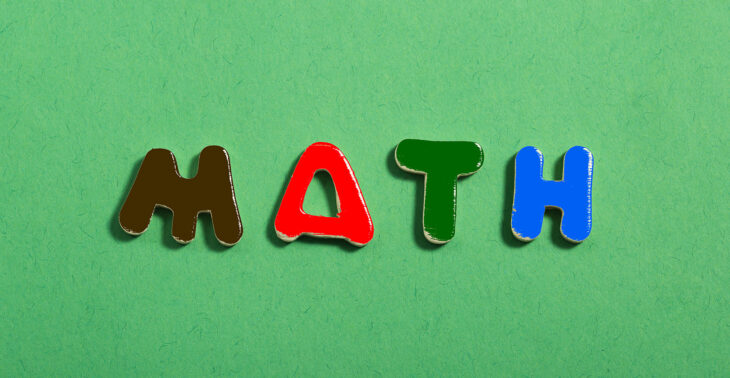
Source: scholastic.com
It is with the concept of counting that the understanding of numbers begins. “How many apples are there” or “how many fingers I show” – the most common questions adults ask children when try to teach them. So little by little, step by step, kids master the quantitative characteristics of the world around them.
There are several ways to quickly teach your baby to count:
- finger counting;
- counting on favorite toys;
- memorizing funny songs and poems containing a sequence of numbers and repeat by heart;
- scoring games.
When applying any of the methods, you need to include the minimum number of digits and increase them only when the child understood and consolidated the learned sequence of numbers well. Usually the maximum should not exceed 5. Then you can increase to 10, 15, etc.
It will also be useful to combine counting with other skills, described below.
Tip: for professional approach, use programs such as Singapore Math for kindergarten designed to help children to find the connection between abstract and concrete.
2. Comparison
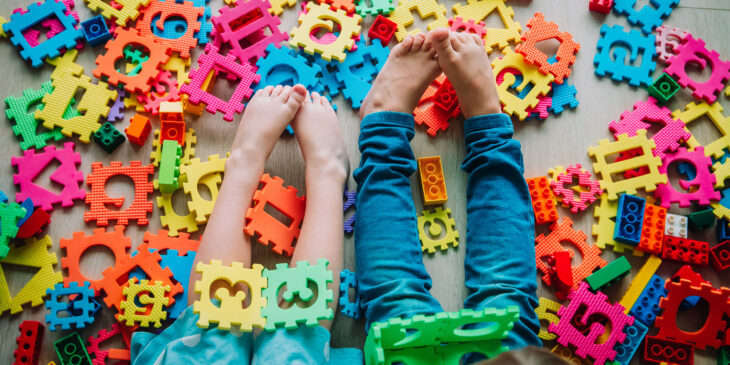
Source: today.com
In order for a child to memorize a sequence of numbers, in addition to cramming, he/she should understand and “see” why one number is greater than another. To do this, he/she needs to show clearly the amount that needs to be learned. For example, show that 4 dolls are more than 2, or 1 finger is less than 3. In order to convey this understanding to the child, work on the example of toys or sweets. This will help the child to remember faster when he/she realize that will have more or less sweets, cookies or toys.
Comparison of values can also be included here. While it is not necessary to dive deeply into the concepts of quantities at this stage, a superficial explanation of the concepts of “farther-closer”, “shorter-longer” or “heavier-lighter” will be appropriate and useful.
Tip: for professional approach, use programs such as Prodigy designed to help children to master pre-school skills by playing games.
3. Understanding of volumetric and flat objects
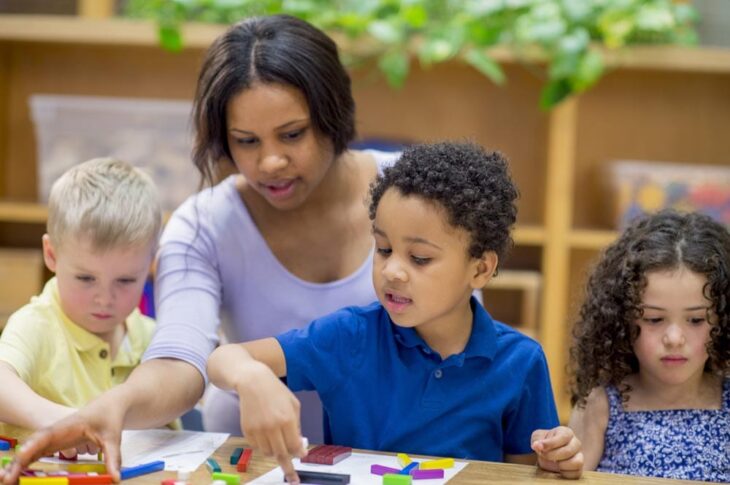
Source: mathsolutions.com
Teaching the shapes of objects and understanding “flat-volumetric” will also help to teach a child to count or consolidate the learned numbers. The best method of remembering shapes is drawing. This process is perceived by the child as a game, which reduces the burden of realizing that he / she now needs to memorize something. For a child in preschool age, this happens subconsciously.
When drawing corner shapes, count and repeat the number of angles whenever possible. Visibility will help your child to remember numbers faster. Here you have a great opportunity to show and explain your child the concept of zero. For example, by drawing a circle or an oval and showing that it has no corners, i.e. their number is zero.
After drawing, you can proceed to sculpting. Plasticine or dry clay are great tools for creating different shapes.
And, of course, use objects with a specific geometric shape – cubes, pyramids, triangles, balls, etc. Here you can also show your kid the difference between shapes in 2 D and 3 D. For example, a triangle cut out of paper – it is a flat figure, and a souvenir pyramid is volumetric.
Tip: for professional approach, use programs such as ESingaporeMath designed to help to understand and analyze shapes through digital space, i.e. VR and/or AR.
4. Addition and subtraction of prime numbers
After the child has mastered all or most of the previous steps, you can proceed to simple mathematical operations – addition and subtraction of prime numbers.
This is also where the methods described in step # 1 work best. By visualizing different numbers of physical or virtual objects, you can teach your child to add and subtract quite quickly. It is also recommended to use special mathematical tools – abacus, counting sticks, numbered cards, dice, board games, etc. with any kind of use of numbers.
This gamification in a physical environment will not only be a productive math lesson, but it will also be funny and enjoyable for everyone.
Tip: for professional approach, use programs such as Khan Academy designed to help to prepare children for pre-school tests and contests.
5. Understanding of two-digit numbers complexity
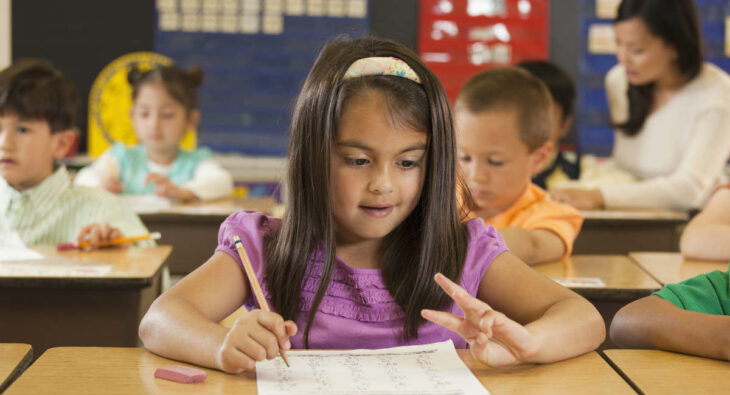
Source: fatherly.com
Decomposition of numbers into components may seem too difficult for kindergarten children, however, if the kids are already well-versed in basic mathematical operations and prime numbers, then you can prepare them to understand complex numbers, especially in older groups.
In order to explain to children why 11 is 10 and 1, it is best to return to repeating the sequence and counting numbers to 10. So, gradually moving on to each next unit of tens, you will find that the future first-grader counts, adds and subtracts extremely easily and without the help of adults.
It will also be useful here to use bunches of branches, bags with a fixed number of contents, or any other “sets” that clearly demonstrate dozens of certain objects. So the child will quickly learn to count large quantities and this will be a great preparation for the multiplication processes, which he/she will master in school.
Tip: for professional approach, use programs such as Splash Math designed to help to cross the bridge from prime numbers to complex.
Final thoughts
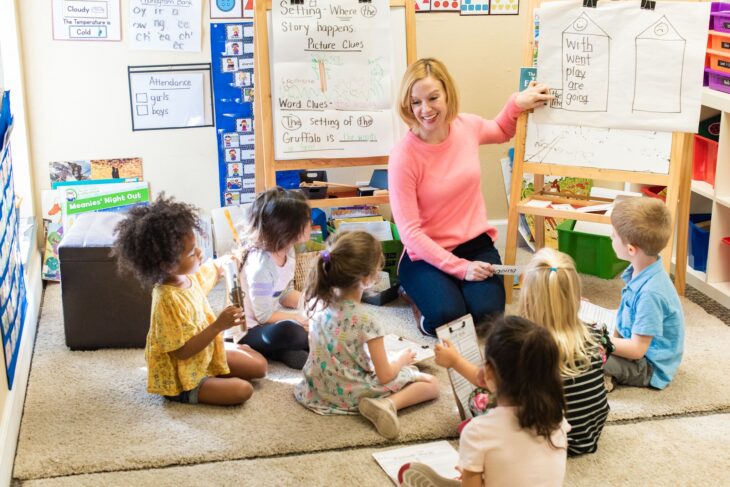
Source: readingcorneronline.com
Studying math in kindergarten is not the lot of mentally gifted children. With the right strategy, developed jointly by parents and caregivers, even before the child comes to kindergarten, it is possible to teach the child a preschool education program in the mathematics-language-environment complex.
In order for this strategy to be effective, it is necessary to take into account the conditions in which the baby will grow up – whether the kindergarten will be completely offline or completely in the virtual space (online), or maybe the child will have to get used to the hybrid schedule.
It should also be borne in mind that teaching in a kindergarten should always be in the group, because children learn faster by playing with each other, observing each other and comparing their successes and failures with their comrades. Certain moments of the learning process can be taken one-on-one with the teacher for each child, but in general, everyone should be involved at once.
Considering that the first steps in learning math require visual support, use professional online services designed specifically for teaching preschool children.

